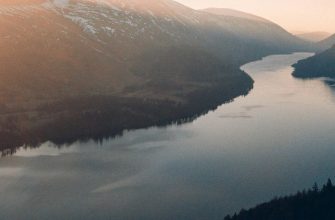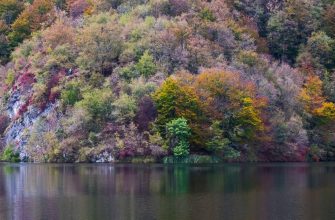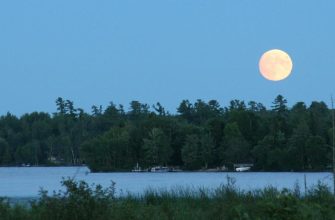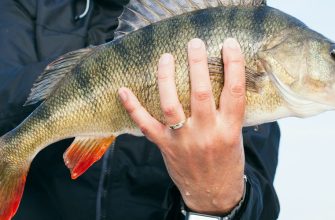- Overview of Yellowstone National Park
- Brief History of Yellowstone National Park
- Vast Size and Natural Wonders
- Fly Fishing in Yellowstone
- Exploring the Rivers, Streams, and Lakes
- A Haven for Anglers
- Yellowstone National Park Fish Species
- Native Fish Species
- Cutthroat Trout
- Lake Trout
- Brown Trout
- Rainbow Trout
- Yellowstone National Park Fishing Areas & Regions
- Gallatin River
- Yellowstone River
- Madison River
- Firehole River
- Bechler River
- Gardner River
- Gibbon River
- Lamar River
- Slough Creek
- Soda Butte Creek
- Trout Lake
- Yellowstone Lake
- Grebe Lake
- Hebgen Lake
- Quake Lake
- How to Fly Fish in Yellowstone National Park at 2023
- Season
- Early June – Swinging Soft Hackles on the Firehole River
- Mid-June – Salmonflies in the Black Canyon of the Yellowstone River
- Mid-June to Mid-September – Big Cutthroat Eating Dries on the Lamar River (and Soda Butte and Slough Creeks)
- September and October – Swinging Streamers for Big Lake-Run Browns on the Madison River
- Weather
- Research the Waters
- Fish Handling
- Fish Handling Tips
- Fishing Gear, Vessels, and Tackle
- Yellowstone National Park Fishing Licenses & Park Regulations
- Fishing Licenses in Yellowstone National Park
- Park Regulations
- Fishing Seasons and Catch Limits
- Equipment Restrictions
- Guided Fishing Tours
- What are Guided Fishing Tours?
- Benefits of Guided Fishing Tours
- Learn from the Experts
- Access to Prime Fishing Spots
- Quality Equipment and Gear
- Safety and Convenience
- Planning Your Guided Fishing Tour to Yellowstone
- Location and Season
- Group Size and Customization
- Duration and Amenities
- Consider hiring a local fishing guide
- Rent a Boat or Bring Your Own
- Renting a Boat in Yellowstone National Park
- Pros of Renting a Boat
- Cons of Renting a Boat
- Bringing Your Own Boat to Yellowstone National Park
- Pros of Bringing Your Own Boat
- Cons of Bringing Your Own Boat
- Planning Your Fishing Trip to Yellowstone
- Research Fishing Spots:
- Check Fishing Regulations:
- Obtain a Fishing License:
- Plan Your Trip Timing:
- Book a Guided Fishing Trip:
- Pack Appropriate Gear:
- Respect the Environment:
- Recommending Fly Fishing Equipment for Yellowstone National Park Fishing
- Fly Rod and Reel
- Fly Lines and Leaders
- Flies
- Waders and Wading Boots
- Other Essential Gear
- FAQs
- Q: What is Yellowstone fishing?
- Q: Is fly fishing popular in Yellowstone?
- Q: Do I need a permit to fish in Yellowstone?
- Q: Can children fish in Yellowstone?
- Q: Are there any restrictions on fishing in Yellowstone?
- Q: Do I need a free permit to fish in Yellowstone?
- Q: Do I need a fishing permit to fish in Yellowstone National Park?
- Q: Where can I get a Yellowstone fishing permit?
- Q: When does the fishing season begin in Yellowstone?
- Q: Can I use flies for fishing in Yellowstone?
- Q: Do children need a fishing permit in Yellowstone?
- Q: Are there any fishing restrictions in Yellowstone?
- Q: Are there any special regulations for fishing lake trout in Yellowstone?
- Q: Can I fish outside the park boundary?
- Q: Is bear spray recommended while fishing in Yellowstone?
- Q: What is the role of the National Park Service in fishing regulations?
Yellowstone National Park, located in the picturesque area of West Yellowstone, is renowned as a fishing paradise. With its pristine rivers and breathtaking landscapes, it offers an unparalleled experience for both seasoned and beginner anglers.
Fly fishing is a focal point in Yellowstone, attracting enthusiasts from all over the world. The park’s rivers, including the famous Yellowstone River, provide abundant opportunities to cast a line and reel in some remarkable catches. Whether you’re an experienced angler looking for a new challenge or a novice eager to learn, Yellowstone has something to offer.

When planning your fishing trip to Yellowstone, it’s essential to possess a valid Yellowstone Park permit. This permit ensures compliance with all fishing regulations and is checked by National Park Service inspectors. These measures are in place to preserve the natural beauty and sustainability of the park’s fisheries.
Yellowstone’s waters are teeming with various species of fish, including trout, which are a favorite among anglers. Streams such as the Fishing Bridge and others in different areas of the park provide ideal spots for fishing. As the park opens its doors to fishing enthusiasts, it’s crucial to respect the rules and guidelines to maintain the delicate balance of the ecosystem.
Exploring Yellowstone’s fly fishing opportunities is an adventure like no other. The park’s serene landscapes, the thrill of the catch, and the camaraderie among fellow anglers create an unforgettable experience. Whether you’re casting your line against the backdrop of the majestic mountains or wading through the crystal-clear rivers, Yellowstone is known for its natural beauty and its ability to captivate anglers.
Overview of Yellowstone National Park

Brief History of Yellowstone National Park
Yellowstone National Park holds a significant place in American history as the first national park in the United States. Established in 1872, it has become a symbol of conservation and preservation. This iconic park spans over 2.2 million acres, primarily located in the state of Wyoming, with parts extending into Montana and Idaho. Its establishment marked a turning point in protecting and appreciating the natural wonders of the country.
Vast Size and Natural Wonders
Yellowstone National Park is renowned for its vast size and breathtaking natural wonders. As you explore its landscapes, you’ll be captivated by the pristine lakes, majestic mountains, and expansive valleys. One of the park’s most remarkable features is Yellowstone Lake, a sprawling body of water that covers over 136 square miles.
It stands as the largest freshwater lake above 7,000 feet in North America, offering a serene and picturesque scene for visitors. The Yellowstone River, with its stunning waterfalls and deep canyons, adds to the park’s natural beauty, creating a landscape that is truly awe-inspiring.
Fly Fishing in Yellowstone

Yellowstone National Park is renowned for its breathtaking landscapes, diverse wildlife, and world-class fishing opportunities. Among the various fishing techniques practiced in the park, fly fishing stands out as a popular and rewarding method for anglers of all skill levels.
Exploring the Rivers, Streams, and Lakes
Yellowstone boasts an extensive network of pristine rivers, meandering streams, and picturesque lakes that offer abundant fishing opportunities. The park is home to over 1,000 miles of fishable waters, providing ample space for anglers to immerse themselves in the beauty of nature while pursuing their passion for fly fishing.
One of the most iconic features of Yellowstone’s fishing landscape is the Yellowstone River. Stretching over 670 miles, it is one of the longest undammed rivers in the United States. Flowing through the heart of the park, this majestic river offers stunning scenery and diverse fish populations, including the native Yellowstone cutthroat trout. Fly fishing enthusiasts can test their skills by presenting delicate dry flies or enticing nymphs to the resident trout that inhabit these pristine waters.
Aside from the Yellowstone River, Yellowstone National Park is also home to a myriad of alpine lakes nestled amidst towering peaks. These crystal-clear lakes, such as Yellowstone Lake and Heart Lake, are often teeming with fish, providing anglers with the opportunity to catch species like lake trout, brook trout, and rainbow trout. Fly fishing in these high-elevation lakes offers a unique and peaceful experience, allowing anglers to connect with nature and enjoy the solitude of the wilderness.
In addition to the rivers and lakes, Yellowstone’s meandering streams and hidden gems present enticing prospects for fly fishing enthusiasts. From the Lamar River in the park’s northeast region to the Firehole River in the geothermal wonderland of the park’s geyser basins, anglers can find a variety of fish species and picturesque settings to cast their lines. The challenging yet rewarding nature of these smaller waterways adds an element of excitement to the angling experience, making it a favorite among seasoned anglers.
A Haven for Anglers
Yellowstone National Park’s commitment to preserving its natural resources and maintaining sustainable fishing practices ensures that future generations can continue to enjoy the wonders of fly fishing in this remarkable landscape. Whether you are an experienced angler or a beginner, the park’s diverse waters offer endless opportunities to hone your skills, appreciate the beauty of nature, and create lasting memories.
So, pack your fly rod, tie on your favorite patterns, and immerse yourself in the remarkable world of fly fishing in Yellowstone. Experience the thrill of casting on legendary waters and let the tranquility of nature rejuvenate your soul. Yellowstone awaits, ready to reveal its treasures to anglers who seek the ultimate fly fishing adventure.
Before embarking on your fly fishing expedition in Yellowstone, it’s important to familiarize yourself with the park’s fishing regulations and obtain the necessary permits. The park has specific guidelines in place to protect its delicate ecosystems and ensure the preservation of its precious fish populations. By practicing catch-and-release, we can contribute to the sustainability of these fisheries and allow future generations to enjoy the same fly fishing experiences.
Yellowstone National Park Fish Species

Native Fish Species
Preserving and protecting native fish species is a top priority for Yellowstone National Park. In addition to the beloved Yellowstone Cutthroat Trout, the park is home to other important native fish species. These include the Mountain Whitefish, which contributes to the park’s delicate ecosystem, and the Arctic Grayling, a testament to the park’s commitment to conservation efforts. These native fish species serve as a reminder of the park’s dedication to maintaining a balanced and thriving environment.
Cutthroat Trout
One of the most sought-after fish species in Yellowstone National Park is the native Yellowstone Cutthroat Trout. Known for its distinctive red slash marks under the lower jaw, this trout species is a prized catch for anglers. The Cutthroat Trout can be found in various lakes and rivers throughout the park, including the Yellowstone River, Yellowstone Lake, and the Lamar River.
Did you know that the Yellowstone Cutthroat Trout is not only a popular fish among anglers, but it also plays an important role in the park’s ecosystem? As a native species, it contributes to the overall biodiversity and helps maintain a balanced aquatic environment.
Read more: Mammoth Lakes Fishing Spots: Tips For Visiting Mammoth And Fishing Its Stunning Lakes
Lake Trout
While the native fish species dominate the waters of Yellowstone National Park, there are also non-native fish species present, such as the Lake Trout. Introduced to Yellowstone Lake in the 1890s, Lake Trout, also known as Mackinaw, has since established itself and become a popular target for anglers. These impressive fish can grow to remarkable sizes, providing an exhilarating challenge for those in pursuit of a trophy catch. The presence of Lake Trout adds diversity to the park’s fish population and offers anglers a unique fishing experience in the park’s vast and scenic waters.
Brown Trout
Another popular fish species in Yellowstone is the Brown Trout. Introduced to the park in the late 1800s, the Brown Trout thrives in the park’s cold and clear waters. Anglers can find Brown Trout in many of the park’s rivers, including the Madison River, Firehole River, and Gibbon River. These trout can reach impressive sizes and provide an exciting challenge for anglers of all skill levels.
In addition to being a favorite target for anglers, the Brown Trout has also had an impact on the park’s ecosystem. As an introduced species, it has competed with native fish for food and habitat, leading to changes in the aquatic community.
Rainbow Trout
The vibrant Rainbow Trout is another species that attracts anglers to Yellowstone National Park. Known for their brilliant colors and acrobatic leaps, Rainbow Trout offers a thrilling fishing experience. They can be found in various rivers and streams within the park, such as the Yellowstone River and the Gardner River. Catching a Rainbow Trout is not only a rewarding experience but also a visual delight.
Rainbow Trout are not only a joy to catch but also serve as an indicator species for the health of the park’s waters. Their presence in a river or stream is often a sign of good water quality, as they require clean and well-oxygenated habitats to thrive.
Yellowstone National Park Fishing Areas & Regions
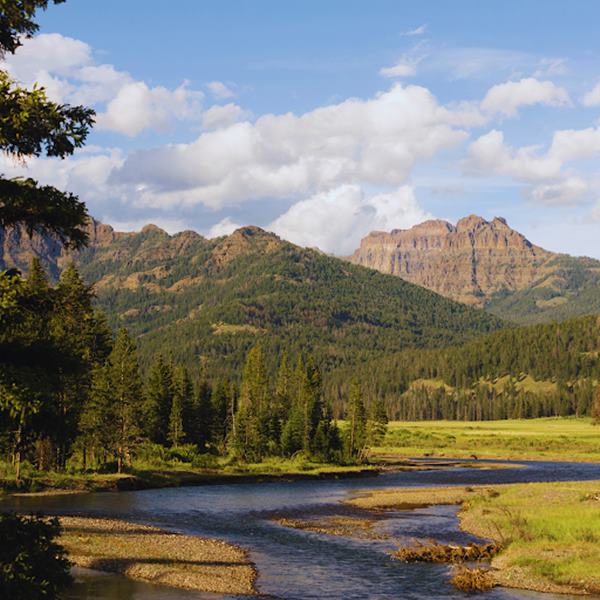
Gallatin River
The Gallatin River is one of the prime fishing spots in Yellowstone National Park. With its crystal-clear waters and abundant trout population, it offers a thrilling experience for anglers of all levels.
Whether you’re a beginner looking to learn the art of fishing or an experienced angler seeking a new challenge, the Gallatin River provides ample opportunities to catch various trout species.
Rainbow trout, brown trout, and cutthroat trout are just a few of the fish you can expect to encounter in these pristine waters. As you cast your line into the river’s shimmering depths, you’ll be surrounded by breathtaking landscapes, adding to the overall enjoyment of your fishing adventure.
Yellowstone River
Flowing through the heart of Yellowstone National Park, the Yellowstone River is a legendary fishing destination that attracts anglers from all over the world. Known for its pristine beauty and diverse fish population, it offers an unparalleled fishing experience.
The river is home to native Yellowstone cutthroat trout, a prized catch for any angler. In addition to cutthroat trout, the Yellowstone River also offers opportunities to catch brown trout and rainbow trout. As you navigate its meandering currents, you’ll find yourself surrounded by awe-inspiring natural wonders and the soothing sounds of nature.
Fishing on the Yellowstone River is an unforgettable experience that will leave you with lasting memories.
Madison River
The Madison River, located within the boundaries of Yellowstone National Park, is widely regarded as one of the most productive wild trout fisheries in the United States. With its excellent fly fishing opportunities, it has become a must-visit destination for anglers of all skill levels.
The river is particularly renowned for its population of brown trout and rainbow trout, providing an exciting challenge for those seeking to test their angling skills. As you cast your line into the clear waters of the Madison River, you’ll be surrounded by stunning natural beauty and have the chance to land a trophy-sized trout.
Whether you’re a seasoned angler or a beginner, the Madison River offers an unforgettable fishing experience.
Firehole River
The Firehole River is a truly unique fishing destination within Yellowstone National Park. Its thermal features, including geysers and hot springs, create a one-of-a-kind fishing experience.
The river is home to a thriving population of brown trout and rainbow trout, known for their impressive size and fierce fight. As you fish along the banks of the Firehole River, you’ll be surrounded by the park’s geothermal wonders and serenaded by the soothing sound of rushing water.
The combination of extraordinary natural features and exceptional fishing opportunities makes the Firehole River a must-visit for any angler exploring Yellowstone.
Bechler River
For those seeking a more secluded fishing experience, the Bechler River in Yellowstone National Park is a hidden gem. Tucked away in the park’s remote southwest corner, this river offers solitude and breathtaking beauty.
The Bechler River is home to native Yellowstone cutthroat trout, providing a unique opportunity to catch these iconic fish. As you navigate its pristine waters, you’ll be immersed in the tranquility of nature, far away from the hustle and bustle of everyday life.
The Bechler River is a true haven for anglers looking to escape into the serenity of Yellowstone’s wilderness.
Gardner River
The Gardner River is a picturesque fishing destination in Yellowstone National Park. Flowing through scenic canyons and meadows, it offers a diverse range of fishing experiences.
Anglers can expect to catch brown trout, rainbow trout, and native Yellowstone cutthroat trout in these pristine waters. The river’s accessible locations and stunning surroundings make it a popular choice for both novice and seasoned anglers.
Whether you prefer casting your line from the riverbanks or wading into the crystal-clear waters, the Gardner River provides an enjoyable and rewarding fishing experience. As you fish along its banks, you’ll be treated to captivating views and the opportunity to reel in some impressive trout.
Gibbon River
Nestled in the heart of Yellowstone National Park, the Gibbon River is a captivating fishing spot that offers an idyllic setting for anglers. With its tranquil waters and abundant trout population, it provides the perfect backdrop for a memorable fishing adventure.
The river is known for its brown trout, rainbow trout, and native Yellowstone cutthroat trout. As you cast your line into the Gibbon River, you’ll be surrounded by the park’s natural wonders, including lush forests and majestic mountain peaks.
The possibility of hooking a trophy-sized trout adds an element of excitement to your angling experience on the Gibbon River.
Lamar River
The Lamar River is a legendary fishing destination within Yellowstone National Park. Renowned for its wild and scenic landscapes, it offers a truly immersive fishing experience.
The river is home to healthy populations of native Yellowstone cutthroat trout, as well as rainbow trout and brown trout. As you fish along the banks of the Lamar River, you’ll have the opportunity to connect with nature and enjoy the serenity of this remarkable place.
Surrounded by towering mountains and vast open meadows, you’ll feel a sense of tranquility that can only be found in Yellowstone’s pristine wilderness.
Slough Creek
Slough Creek is a renowned fly fishing destination in Yellowstone National Park. Its meandering waters, beautiful meadows, and abundant wildlife create an unforgettable fishing experience.
The creek is famous for its large and challenging trout, including Yellowstone cutthroat trout, brown trout, and rainbow trout. As you cast your fly on Slough Creek, you’ll be surrounded by the park’s natural beauty, from the gentle rustling of the tall grass to the majestic flight of resident bald eagles.
Fishing on Slough Creek is a true angler’s paradise, offering both thrilling challenges and moments of serene tranquility.
Soda Butte Creek
Soda Butte Creek is a hidden gem for fly fishing enthusiasts in Yellowstone National Park. With its fast-flowing waters and diverse insect populations, it offers excellent opportunities to catch trout.
The creek is known for its Yellowstone cutthroat trout, as well as rainbow trout and brook trout. As you wade through the crystal-clear waters of Soda Butte Creek, you’ll be captivated by the surrounding wilderness. The towering peaks, lush forests, and abundant wildlife create a truly immersive fishing experience.
Whether you’re a seasoned angler or a novice, Soda Butte Creek is sure to leave you with unforgettable memories and the desire to return again and again.
Trout Lake
Nestled in the mountains of Yellowstone National Park, Trout Lake is a pristine alpine lake that provides a unique fishing experience. The lake is home to a healthy population of native Yellowstone cutthroat trout, making it a paradise for anglers.
Fishing on Trout Lake offers breathtaking views and a tranquil atmosphere, allowing you to connect with nature while pursuing these elusive trout. As you cast your line into the calm waters of the lake, you’ll be surrounded by towering peaks, vibrant wildflowers, and the occasional glimpse of wildlife.
Trout Lake is a hidden treasure within Yellowstone, offering a serene and rewarding fishing experience.
Yellowstone Lake
Yellowstone Lake is the largest high-elevation lake in North America and a premier fishing destination within Yellowstone National Park. With its vast size and diverse fish population, it offers endless opportunities for anglers.
The lake is known for its trophy-sized lake trout, as well as Yellowstone cutthroat trout and Arctic grayling. Fishing on Yellowstone Lake provides a truly awe-inspiring experience, surrounded by the park’s majestic landscapes. As you navigate the deep blue waters of the lake, you’ll be treated to panoramic views of snow-capped mountains, pristine forests, and the occasional glimpse of wildlife.
Yellowstone Lake is a must-visit for any angler seeking a true fishing adventure.
Grebe Lake
Grebe Lake, situated in the remote northeast corner of Yellowstone National Park, is a hidden treasure for anglers seeking solitude. The lake’s pristine waters are home to native Yellowstone cutthroat trout, making it a haven for fly fishing enthusiasts.
Fishing on Grebe Lake allows you to immerse yourself in the untouched wilderness and enjoy the serenity of this secluded location. Surrounded by towering mountains and dense forests, you’ll feel a sense of peace and tranquility as you cast your line into the clear waters of Grebe Lake.
This hidden gem offers a unique fishing experience that is sure to leave you with a deep appreciation for the natural beauty of Yellowstone.
Hebgen Lake
Hebgen Lake, located just west of Yellowstone National Park, is a popular fishing destination known for its excellent trout fishing. The lake is home to rainbow trout, brown trout, and lake trout, providing a variety of angling opportunities.
With its scenic views and productive waters, fishing on Hebgen Lake is a delightful experience for both beginners and experienced anglers. The lake’s calm waters reflect the surrounding mountains, creating a picturesque backdrop for your fishing adventure.
Whether you choose to fish from the shoreline or explore the lake by boat, Hebgen Lake offers a serene and rewarding fishing experience.
Quake Lake
Quake Lake, formed by an earthquake-triggered landslide in 1959, is an intriguing fishing destination near Yellowstone National Park. The lake is known for its healthy trout population, including rainbow trout, brown trout, and cutthroat trout.
Fishing on Quake Lake offers a unique experience, combining natural beauty with the captivating history of the area. As you cast your line into the clear waters of the lake, you’ll be surrounded by the rugged beauty of the surrounding mountains and the remnants of the historic landslide.
Quake Lake is a fascinating fishing spot that allows you to connect with nature and reflect on the forces that shaped this remarkable landscape.
How to Fly Fish in Yellowstone National Park at 2023
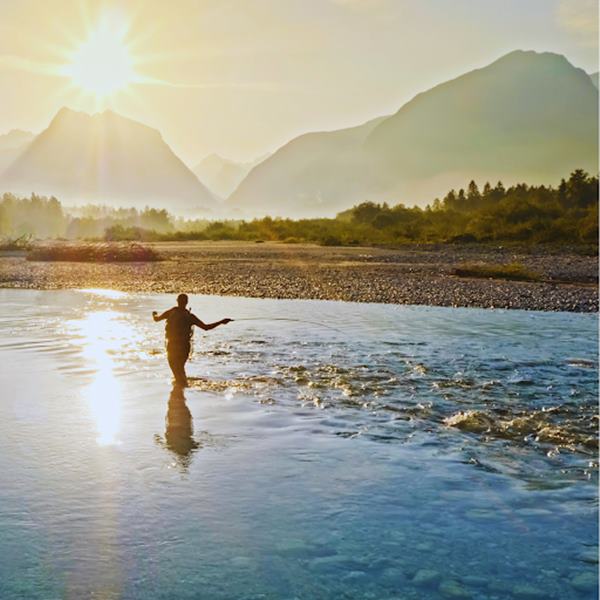
Season
Early June – Swinging Soft Hackles on the Firehole River
In early June, one of the most exciting fishing opportunities in Yellowstone National Park is swinging soft hackles on the Firehole River. As the temperature rises, the hatches become more consistent, and the fish become more active. This is the perfect time to use dry flies and nymphs to entice the rising trout. The Firehole River is known for its abundant population of rainbow and brown trout, making it a prime location for fly fishing enthusiasts.
Mid-June – Salmonflies in the Black Canyon of the Yellowstone River
Mid-June marks the arrival of the salmon fly hatch in the Black Canyon of the Yellowstone River. This hatch is eagerly anticipated by anglers as it attracts large trout to the surface to feed. Using large dry flies that mimic the size and color of the salmon flies, anglers can experience exhilarating topwater action. It’s important to note that the salmon fly hatch is short-lived, lasting only a couple of weeks, so timing is crucial for a successful fishing trip.
Mid-June to Mid-September – Big Cutthroat Eating Dries on the Lamar River (and Soda Butte and Slough Creeks)
From mid-June to mid-September, anglers have the opportunity to witness big cutthroat trout rising to eat dries on the Lamar River, as well as Soda Butte and Slough Creeks. This is a true angler’s paradise, where the crystal-clear waters offer a perfect view of the trout and their feeding patterns. Matching the hatch is essential during this time, as the trout can be selective. Dry fly fishing is the preferred method, and anglers can expect to catch and release numerous trophy-sized cutthroat trout.
September and October – Swinging Streamers for Big Lake-Run Browns on the Madison River
In September and October, the focus shifts to the Madison River, where anglers can target big lake-run brown trout. This is the time of year when these migratory fish return to the river to spawn. Swinging streamers is an effective technique to entice these aggressive fish. Using large, brightly colored streamers, anglers can provoke powerful strikes from these trophy browns. It’s an exciting and challenging experience that every fly fisherman should try.
Weather
When planning a fly fishing trip to Yellowstone National Park in 2023, it’s essential to consider the weather conditions. The park experiences a wide range of weather patterns throughout the fishing season. From the warm and sunny days of early summer to the cool and crisp days of fall, anglers should be prepared for any weather scenario. It’s advisable to check the weather forecast before heading out and pack appropriate clothing layers to ensure comfort during the fishing adventure.
Research the Waters
Before embarking on a fly fishing trip to Yellowstone National Park, it’s crucial to research the waters you plan to fish. Familiarize yourself with the different rivers, streams, and lakes within the park, as each offers unique fishing opportunities. Study the specific regulations and guidelines for each water body, including catch and release policies and any restrictions on the types of flies that may be used. This preparation will help you make the most of your fishing experience and ensure compliance with park regulations.
Fish Handling
When practicing catch and release in Yellowstone National Park, proper fish handling techniques are essential to ensure the well-being of the fish population. It’s important to handle the fish gently, keeping them in the water as much as possible to minimize stress. Avoid touching the fish with dry hands or rough materials that could remove their protective slime. Use barbless hooks to facilitate easy hook removal and reduce injury to the fish. By practicing responsible fish handling, anglers can contribute to the sustainability of the park’s fish populations.
Fish Handling Tips
Here are some fish-handling tips to keep in mind while fly fishing in Yellowstone National Park:
- Wet your hands before handling the fish to minimize damage to their protective slime.
- Use a landing net with soft mesh to support the fish and prevent injury.
- Keep the fish in the water as much as possible, especially during hook removal and photography.
- Use barbless hooks to facilitate easy and safe hook removal.
- Minimize the time spent out of the water and handle the fish with care to prevent exhaustion.
- Release the fish gently, allowing them to swim away on their own when they are ready.
Read more: Smith Mountain Lake Fishing Guide: Tips, Best Cat Fishing Spots in Virginia
Fishing Gear, Vessels, and Tackle
When fly fishing in Yellowstone National Park, it’s essential to have the right gear, vessels, and tackle for a successful and enjoyable experience. Here are some considerations:
- Fly rods: Choose a rod that suits the type of fishing you plan to do, whether it’s delicate dry fly presentations or casting heavy streamers.
- Fly reels: Select a reel with a smooth drag system to handle the powerful runs of trophy fish.
- Waders and boots: Invest in high-quality waders and boots for comfort and protection while wading in the park’s rivers and streams.
- Flies: Carry a variety of flies, including dry flies, nymphs, and streamers, to match the hatches and target different fish species.
- Float tubes or drift boats: Consider using float tubes or drift boats to access remote areas of the park and enjoy a unique fishing experience.
By being well-prepared with the right gear and following the regulations and guidelines set by Yellowstone National Park, fly fishing enthusiasts can have a memorable and rewarding experience in 2023.
Yellowstone National Park Fishing Licenses & Park Regulations
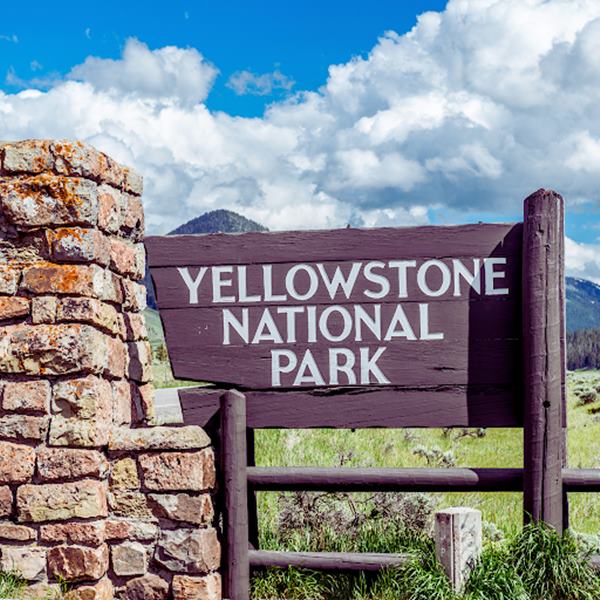
Fishing in Yellowstone National Park is a popular activity that allows visitors to immerse themselves in the park’s natural beauty while enjoying the thrill of catching fish. However, it is essential to understand the importance of obtaining fishing licenses and adhering to park regulations to ensure the preservation of the park’s ecosystem.
Fishing Licenses in Yellowstone National Park
To fish in Yellowstone National Park, you need to possess a valid fishing permit issued by the park. There are different types of fishing licenses available, including daily permits and season permits. These licenses can be obtained from authorized vendors both within and outside the park.
To obtain a fishing permit, you can visit a designated vendor located within Yellowstone National Park or purchase one from authorized vendors outside the park. It is important to ensure that the fishing license you obtain is valid and complies with all fishing regulations in Yellowstone National Park.
By obtaining a fishing permit, you not only gain legal permission to engage in fishing activities within the park but also contribute to the funding of conservation efforts and the management of the park’s fish populations.
Remember to always carry your fishing permit while fishing in Yellowstone National Park and adhere to all fishing regulations to help preserve the park’s unique ecosystem.
Park Regulations
The regulations for fishing in Yellowstone National Park are structured to strongly emphasize native fish conservation and the preservation of the park’s ecosystem. These regulations are put in place to ensure a sustainable fishing experience for anglers while protecting the delicate balance of the park’s aquatic ecosystems.
Understanding and following park regulations is crucial for every angler visiting Yellowstone National Park. These regulations cover various aspects of fishing, including fishing seasons, catch limits, and equipment restrictions. By adhering to these regulations, anglers can contribute to the long-term preservation of the park’s unique ecosystem.
Fishing Seasons and Catch Limits
Yellowstone National Park has specific fishing seasons and catch limits that vary depending on the type of fish and the location within the park. These regulations are in place to prevent overfishing and ensure the sustainability of fish populations.
Before embarking on your fishing adventure in Yellowstone, it is essential to familiarize yourself with the official park website and consult local fishing guides for detailed information on fishing seasons and catch limits. By following these guidelines, you can enjoy your fishing experience while respecting the natural cycles of the park’s fish populations.
Equipment Restrictions
To protect the park’s ecosystem, certain fishing tackle, such as leaded fishing tackle and ribbon for nymph fishing, are not allowed in Yellowstone National Park. These restrictions are in place to prevent the introduction of harmful substances and minimize the impact on the park’s aquatic life.
Anglers should ensure their fishing equipment complies with all fishing regulations and provisions set by the park. By using environmentally friendly and approved fishing gear, you contribute to the preservation of the park’s delicate aquatic ecosystems.
Guided Fishing Tours
For those who want to make the most of their fishing experience in Yellowstone National Park, guided fishing tours are available. These tours are led by experienced and knowledgeable guides who will take you to the best fishing spots and provide valuable insights and techniques.
Guided fishing tours offer a range of benefits, including access to private fishing areas, expert instruction, and all the necessary equipment. Whether you’re a beginner or an experienced angler, a guided fishing tour ensures a memorable and successful fishing expedition.
What are Guided Fishing Tours?
Guided fishing tours are professionally organized excursions that offer individuals or groups the opportunity to fish in America’s lakes with the guidance and expertise of experienced anglers. These tours are designed to cater to both beginners and seasoned anglers, providing valuable insights, techniques, and access to prime fishing locations.
Benefits of Guided Fishing Tours
Learn from the Experts
One of the primary advantages of guided fishing tours is the opportunity to learn from expert anglers. These knowledgeable guides have spent countless hours honing their skills and understanding the intricacies of America’s lakes. They can teach you various fishing techniques, share valuable tips, and provide insights into the behavior and habitats of different fish species.
Access to Prime Fishing Spots
Guided fishing tours often provide access to exclusive fishing spots that are known for their abundant fish populations. These spots may be difficult to reach or require specific knowledge of the area. With the guidance of a professional angler, you can explore these hidden gems and increase your chances of landing a remarkable catch.
Quality Equipment and Gear
When you embark on a guided fishing tour, you can expect to have access to top-notch fishing equipment and gear. From high-quality rods and reels to specialized lures and bait, the guides will ensure that you are equipped with everything you need for a successful fishing experience. This eliminates the need to invest in expensive gear or worry about bringing the right equipment.
Safety and Convenience
Guided fishing tours prioritize safety and convenience. The guides are trained in first aid and possess a deep understanding of the local waters, weather conditions, and potential hazards. They will ensure that you have a safe and enjoyable experience, providing peace of mind throughout your fishing adventure.
Planning Your Guided Fishing Tour to Yellowstone
When considering a guided fishing tour, it is essential to research and choose a reputable tour provider. Look for companies or guides with extensive experience, positive reviews, and a commitment to sustainable fishing practices. Additionally, consider the following factors:
Location and Season
Research the best location and times to fish in Yellowstone. The park offers different fishing seasons, and certain times of the year are more productive than others.
Group Size and Customization
Consider whether you prefer a private tour or enjoy the camaraderie of fishing with a small group. Some guided fishing tours offer customizable options, allowing you to tailor the experience to your specific preferences. Communicate your expectations to the tour provider, ensuring a personalized and enjoyable adventure.
Duration and Amenities
Guided fishing tours can range from a few hours to multiple days. Determine how much time you want to dedicate to the experience and consider the amenities provided during the tour. Some tours may include meals, accommodations, or additional activities to enhance your overall trip.
Consider hiring a local fishing guide
They have extensive knowledge of the park’s fishing spots and can enhance your overall experience.
Rent a Boat or Bring Your Own
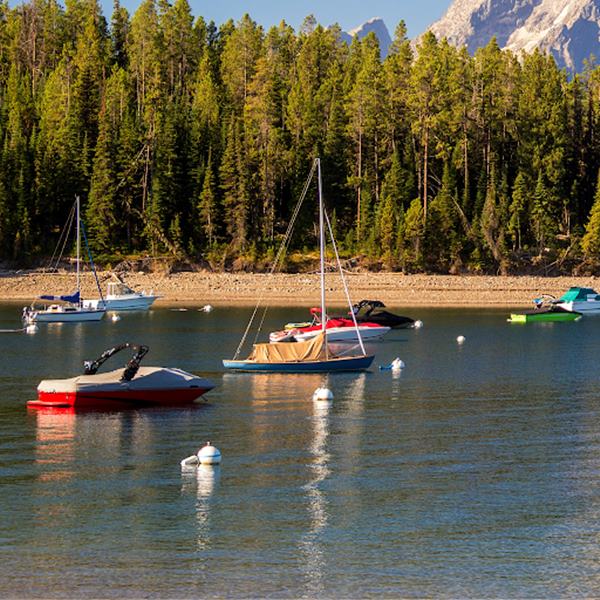
If you’re planning a fishing trip to Yellowstone, you may be wondering whether to rent a boat or bring your own.
Renting a Boat in Yellowstone National Park
Renting a boat can be a convenient option for those who don’t have their own watercraft. Yellowstone National Park offers boat rental services at various locations within the park. Whether you need a motorized boat or a non-motorized one, you’ll find plenty of options to suit your preferences.
Pros of Renting a Boat
Renting a boat has its advantages. Firstly, it eliminates the hassle of transporting your own boat to the park. You can simply arrive at the designated rental location and get started with your fishing adventure. Additionally, rental boats are often well-maintained and equipped with the necessary safety gear, ensuring a safe and comfortable experience on the water.
Cons of Renting a Boat
However, there are a few downsides to consider when renting a boat. The rental fees can add up, especially if you plan to spend multiple days fishing. Availability may also be an issue during peak seasons, so it’s advisable to make reservations in advance. Moreover, you may have to adhere to specific rental policies and restrictions, such as limited fishing areas or time constraints.
Bringing Your Own Boat to Yellowstone National Park
If you’re a seasoned angler and prefer the familiarity of your own boat, bringing it to Yellowstone National Park can be a great option. It allows you to have full control over your fishing experience and provides the comfort of using equipment you’re already accustomed to.
Pros of Bringing Your Own Boat
Bringing your own boat offers flexibility and convenience. You can explore the park’s lakes at your own pace and access fishing spots that may be less crowded. It also saves you from the hassle of renting and familiarizing yourself with a new watercraft. Additionally, if you plan to fish for an extended period, bringing your own boat may prove to be more cost-effective compared to renting.
Cons of Bringing Your Own Boat
However, there are a few considerations to keep in mind when bringing your own boat. Firstly, you’ll need to ensure your boat meets all the park’s regulations and safety requirements. You’ll also be responsible for transporting and launching your boat, which can be time-consuming and may incur additional fees. Lastly, if you’re not familiar with the park’s waterways, navigating and finding the best fishing spots may require some research and exploration.
Planning Your Fishing Trip to Yellowstone
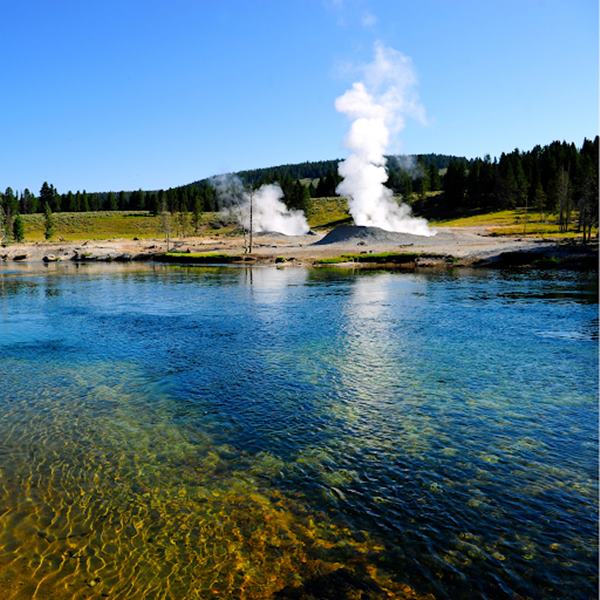
To ensure a successful fishing trip in Yellowstone, follow these step-by-step recommendations:
Research Fishing Spots:
Start by researching the various fishing spots available in Yellowstone. Identify the rivers and streams known for excellent fishing experiences, such as the Yellowstone River, Lamar River, Madison River, and Firehole River. Consider the unique qualities and fish populations of each spot to choose the ones that align with your preferences.
Check Fishing Regulations:
Before your trip, familiarize yourself with the fishing regulations of Yellowstone National Park. Visit the park’s official website for up-to-date information on season dates, specific restrictions, and catch limits. Adhering to these regulations ensures the sustainability of fish populations and helps maintain the delicate ecosystem.
Obtain a Fishing License:
To fish within Yellowstone National Park, you must have a valid Yellowstone fishing license. Purchase your license online or from authorized vendors outside the park. Ensure that you have your fishing license with you at all times during your fishing trip to comply with park regulations.
Plan Your Trip Timing:
Consider the opening and closing dates of the park and the fishing season. Fishing season typically starts in late May and runs through November. Check the park’s official website for any updates or changes to the fishing season dates. Planning your trip during optimal fishing conditions will increase your chances of a successful fishing experience.
Book a Guided Fishing Trip:
If you’re new to fishing or want to enhance your experience, consider booking a guided fishing trip with experienced fishing guides. Several reputable outfitters in Yellowstone and its surrounding areas offer guided trips. These guides have extensive knowledge of the best fishing spots and can provide valuable insights, techniques, and advice to elevate your fishing adventure.
Pack Appropriate Gear:
Make sure to pack all the necessary fishing gear for your trip. Bring fishing rods, reels, lines, hooks, and bait suitable for the type of fish you intend to catch. Additionally, pack appropriate clothing, including waterproof gear, hats, sunglasses, and sunscreen, to ensure comfort and protection while fishing.
Respect the Environment:
While fishing in Yellowstone, always practice catch-and-release. This conservation-minded approach helps preserve fish populations and maintains the delicate balance of the ecosystem. Follow the park’s fishing regulations and be responsible for leaving no trace behind. Dispose of any waste properly and respect the natural surroundings.
By following these recommendations, you can plan your fishing trip to Yellowstone with confidence and maximize your chances of a successful and enjoyable fishing adventure. Immerse yourself in the beauty of nature, respect the park’s regulations, and create unforgettable memories in America’s beloved Yellowstone National Park.
Recommending Fly Fishing Equipment for Yellowstone National Park Fishing

Fly Rod and Reel
When it comes to fly fishing in Yellowstone, having a versatile fly rod and reel is crucial. A 9-foot, 5-weight fly rod is an excellent choice for most fishing situations in the park. It offers the right balance between delicacy and power, allowing you to cast accurately and effectively. Pair your fly rod with a reliable reel that has a smooth drag system to handle the fighting fish found in Yellowstone’s waters.
Fly Lines and Leaders
To effectively present your flies to the fish, you’ll need a selection of fly lines and leaders. A weight-forward floating line is suitable for most fishing scenarios in Yellowstone, allowing you to cast dry flies, nymphs, and streamers with ease. Carry a range of leaders in different lengths and tippet sizes to adapt to various fishing conditions and the preferences of the fish.
Flies
Yellowstone National Park’s rivers and streams offer diverse insect hatches throughout the fishing season. You’ll want to have a selection of flies that match the prevalent insects on the water. Be prepared with dry flies, nymphs, and streamers that imitate the local insect species, such as mayflies, caddisflies, and stoneflies. Consult with experts, like the owner of Blue Ribbon Flies, to get accurate recommendations on the most effective fly patterns for the park.
Waders and Wading Boots
To comfortably access and navigate Yellowstone’s rivers and streams, a good pair of breathable waders and sturdy wading boots is essential. Opt for waders that provide both insulation and breathability to keep you comfortable in various weather conditions. Ensure your wading boots have proper traction, as the riverbeds can be slippery.
Other Essential Gear
In addition to the core fly fishing equipment mentioned above, there are a few other items you should consider bringing along for your Yellowstone fishing adventure. These include a landing net to safely handle and release fish, polarized sunglasses to reduce glare and improve visibility in the water, a hat and sunscreen for sun protection, and a fishing vest or pack to carry your gear and accessories conveniently.
Read more: Best Fishing Lakes in Minnesota: Discover the Lake Mille Lacs and Lake Vermilion
Remember, regulations can be found on the official Yellowstone National Park website, so familiarize yourself with the fishing rules and guidelines before your trip. Also, keep in mind that fish in Yellowstone National Park’s waters are known for rising to dry flies, offering exciting opportunities for fly anglers.
Plan your visit to Yellowstone National Park’s fishing locations wisely, and make the most of your time exploring the blue-ribbon waters. With the right fly fishing equipment and a passion for angling, you’re bound to create unforgettable memories in this natural wonderland.
FAQs
Q: What is Yellowstone fishing?
A: Yellowstone fishing refers to the act of fishing in the rivers and streams within Yellowstone National Park.
Q: Is fly fishing popular in Yellowstone?
A: Yes, fly fishing is a popular method of fishing in Yellowstone.
Q: Do I need a permit to fish in Yellowstone?
A: Yes, you need a valid Yellowstone fishing permit to fish in the park.
Q: Can children fish in Yellowstone?
A: Yes, children can fish in Yellowstone as long as they comply with all fishing regulations and are accompanied by an adult.
Q: Are there any restrictions on fishing in Yellowstone?
A: Fishing is allowed in designated areas of Yellowstone. Certain streams and lakes may have specific regulations, so it’s important to check with the park service or inspectors for the latest information.
Q: Do I need a free permit to fish in Yellowstone?
A: Yes, you need to obtain a free fishing permit from the National Park Service before fishing in Yellowstone.
Q: Do I need a fishing permit to fish in Yellowstone National Park?
A: Yes, a valid Yellowstone National Park fishing permit is required to fish in the park waters. State fishing licenses are not valid inside the park.
Q: Where can I get a Yellowstone fishing permit?
A: You can obtain a valid park fishing permit from the park rangers or park service inspectors. They will check your permit to ensure compliance with fishing regulations.
Q: When does the fishing season begin in Yellowstone?
A: The fishing season in Yellowstone typically starts on the Saturday of Memorial Day weekend and extends throughout the whole season.
Q: Can I use flies for fishing in Yellowstone?
A: Yes, flies may be used for fishing in Yellowstone. However, it is important to have a valid Yellowstone National Park fishing permit.
Q: Do children need a fishing permit in Yellowstone?
A: Children can fish under the direct supervision of an adult who possesses a valid park fishing permit. The child must comply with all fishing regulations.
Q: Are there any fishing restrictions in Yellowstone?
A: Fishing in Yellowstone is allowed in designated areas of the park. Some sections may have specific regulations, so it is essential to check the park newspaper or consult with park rangers.
Q: Are there any special regulations for fishing lake trout in Yellowstone?
A: Yes, fishing for lake trout in Yellowstone requires a valid park fishing permit. Additional regulations may apply, and it is advisable to check with the park service for specific guidelines.
Q: Can I fish outside the park boundary?
A: Fishing outside the park boundary is subject to state fishing regulations. A valid fishing license is required if you plan to fish in areas outside of Yellowstone National Park.
Q: Is bear spray recommended while fishing in Yellowstone?
A: Yes, carrying bear spray is highly recommended for personal safety while fishing in Yellowstone. It is essential to be aware of the ecology of Yellowstone and take necessary precautions.
Q: What is the role of the National Park Service in fishing regulations?
A: The National Park Service plays a crucial role in enforcing fishing regulations in Yellowstone. Park service inspectors check permits and ensure compliance with fishing rules.

